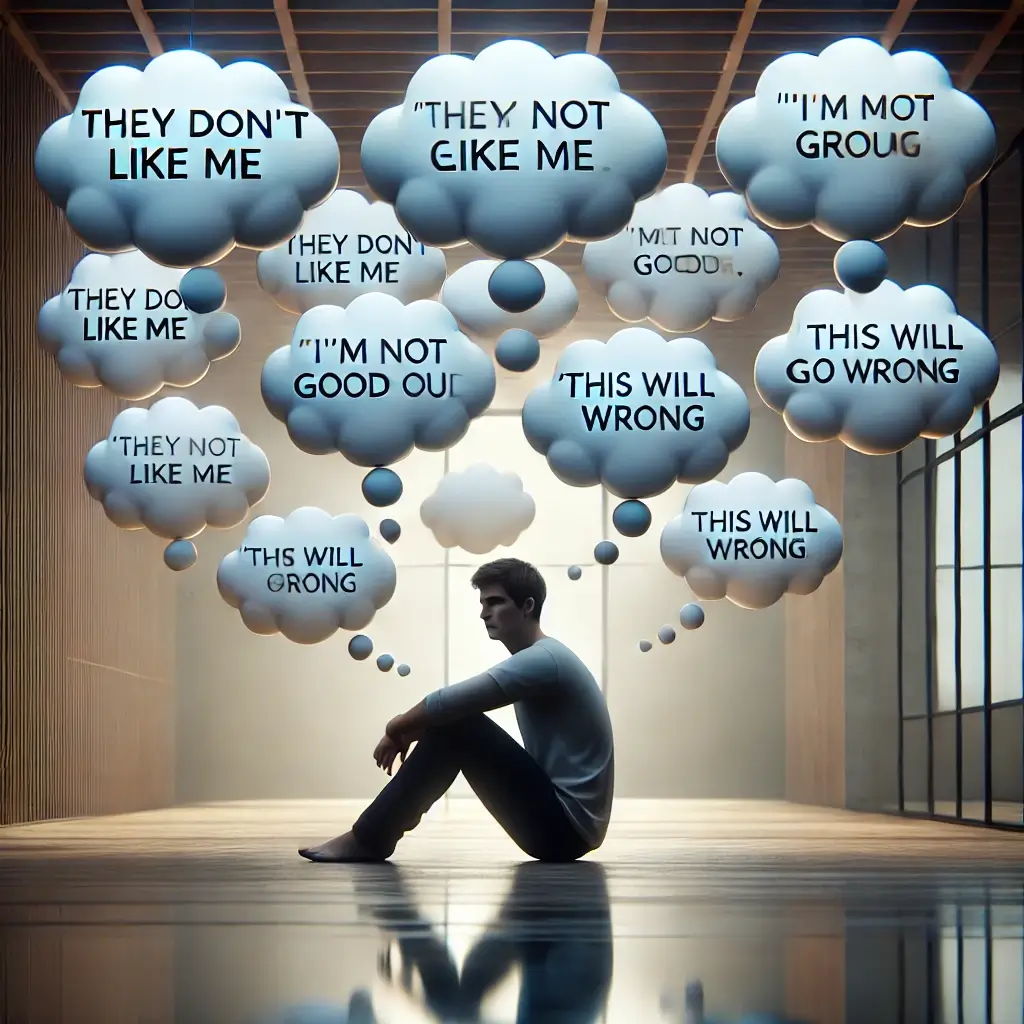What if you could reduce stress, strengthen your relationships, and unlock a calmer, more fulfilling life—starting right now? 🌟 Imagine achieving all this through simple, science-backed practices that are completely free and rooted in cutting-edge research.
This isn’t just wishful thinking—it’s a reality inspired by the transformative work of experts like Dr. John Vervaeke, a world-renowned authority on wisdom and intelligence. 🧠✨
If this sounds intriguing, then this article is for you. Let’s dive in! 🚀

Here’s the bold truth: backed by the latest scientific insights and our growing understanding of how the brain works, it’s possible to practice your way to a life filled with more calm, clarity, and empathy. The secret lies in understanding how your mind operates and adopting small, intentional habits that lead to lasting transformation.
Thanks to modern research, we now know that stress, misunderstandings, and conflict don’t have to control your life. 🧠✨ Today, we’ll explore a simple, science-backed practice called the 3-Strike Rule—a technique designed to help you:
- Rewire your brain for thoughtful, measured responses.
- Deepen your connections with others.
- Transform how you navigate the challenges of daily life.
This isn’t just about knowledge; it’s about taking action. And it works. The best part? It’s simple to get started, and the benefits can ripple into every area of your life.
Why Life Feels Overwhelming: The Hidden Root of Stress

We’ve all been there:
🌪️ Frustrated when someone doesn’t see things your way, leaving you wondering, “How can they not get it?”
🔁 Stuck replaying conversations in your head or second-guessing every decision you’ve made?
At the core of these struggles are perspective clashes—when your brain interprets a situation one way, and someone else’s brain sees it completely differently. These clashes aren’t just frustrating; they’re one of the biggest drivers of stress, tension, and misunderstandings in our daily lives.
But here’s the good news: perspective clashes are fixable. By understanding how your brain processes information and how others experience the world, you can:
- Reduce stress 🧘♂️
- Build stronger relationships ❤️
- Handle conflicts with wisdom and empathy 🌟
The key isn’t changing others—that’s practically impossible. Instead, the focus should be on understanding why you and others act the way you do. By leveraging the insights from cutting-edge science, you gain greater clarity when navigating perspective clashes.
With regular practice, you’ll develop the skills to approach these situations with much more ease, empathy, and understanding, reducing tension and fostering better connections in the process.
The Science Behind Perspective Clashes: Why We See Things Differently 🧠✨

Have you ever wondered why two people can experience the exact same situation yet interpret it in completely different ways? The answer lies in the fascinating way our brains work. 🧠✨
Your brain processes information through a unique blend of emotions, memories, and predictions, crafting a perspective that’s entirely your own. This perspective is shaped by your past experiences and the expectations your mind unconsciously sets, making it a powerful filter through which you see the world. 🌍
Understanding this process is the first step toward bridging perspective gaps, reducing misunderstandings, and building deeper connections. ❤️🤝
Your Brain: The Ultimate Prediction Machine

Your brain is constantly working to make sense of the world by predicting what will happen next. This process, known as Predictive Processing Theory, is how your mind helps you navigate life efficiently. While these predictions are often helpful, they can sometimes lead to misunderstandings and tension when reality doesn’t align with your expectations.
Here’s how it works:
1️⃣ Forms Expectations
Your brain uses past experiences, beliefs, and emotions to create mental shortcuts, shaping what you expect in any given situation.
🔍 Example: If a friend usually replies to texts quickly, your brain predicts they’ll respond promptly every time.
🧠 Why It Matters:
These expectations influence how you interpret situations—before they even happen. When reality doesn’t meet these expectations, your brain can trigger emotional responses like frustration or disappointment.
2️⃣ Filters Information
When new information arrives, your brain filters it through the lens of what it thinks is most relevant. This helps you process information quickly but can also amplify biases or assumptions.
🔍 Example: If a colleague speaks with a distracted tone, your brain might interpret it as annoyance, even if they’re just preoccupied.
🧠 Why It Matters:
This filtering system is efficient but can make you overlook important context, reinforcing assumptions instead of challenging them. Over time, this can lead to misunderstandings or misplaced emotions.
3️⃣ Adjusts Predictions
When reality doesn’t match your brain’s expectations, it recalibrates. However, this adjustment isn’t always immediate, and the delay can cause emotional reactions like confusion or frustration.
🔍 Example: If your friend takes longer than usual to reply to your message, your brain might initially interpret the delay as being ignored, even if they’re simply busy.
🧠 Why It Matters:
This lag between expectation and reality often leads to stress or conflict. Learning to manage this delay by pausing and considering alternative explanations can reduce unnecessary tension and improve relationships.
The Big Picture:
Your brain’s prediction process is a powerful tool for navigating life, but it’s not infallible. Taking time to challenge your assumptions and allow space for adjustments can transform how you handle conflicts and stress in daily life.
The Hidden Catch: Cognitive Biases

Your brain’s predictive system is a powerful tool, but it comes with a hidden flaw: cognitive biases. 🧠⚡ These biases can subtly distort how you interpret the world, leading to misunderstandings and unnecessary tension.
Here’s what often happens:
- Focuses on what feels most relevant to you: Your brain prioritises information it deems important, which can amplify personal biases and emotional reactions. 😤🔍
- Confirms existing beliefs: Instead of seeking out new perspectives, your brain often looks for evidence that supports what it already assumes—even if those assumptions are inaccurate. 🔄🤔
The Result:
You might misinterpret someone’s actions or words based on your own perspective, creating unnecessary stress, tension, and conflict. 😬💬
The good news? By understanding that we all have biases shaped by how our brains work and what we know, you can take the first step toward overcoming them.
Through practice, you can learn to recognise these biases, question your assumptions, and broaden your perspective. This shift allows you to respond with greater clarity, empathy, and understanding in every interaction. 🌟🤝
The Key to Resolving Perspective Clashes

The secret to overcoming perspective clashes lies in rewiring your responses. With the 3-Strike Rule—a simple, science-backed practice—you can shift from emotional reactions to thoughtful responses, transforming the way you handle misunderstandings and conflicts.
By incorporating this powerful technique, you’ll not only reduce stress but also build stronger connections and navigate life with greater calm and clarity. 🌟 Let’s dive into how it works.
What Is the 3-Strike Rule?

The 3-Strike Rule is a straightforward yet transformative practice designed to help you:
✔️ Pause before reacting: Create space to prevent impulsive emotional responses.
✔️ Challenge assumptions: Explore alternative perspectives and avoid jumping to conclusions.
✔️ Seek clarity: Use calm, open communication to understand others more effectively.
This practice isn’t just about avoiding conflict—it’s about rewiring your brain to respond with thoughtfulness and empathy. By embracing this approach, you cultivate a deeper understanding of people and the world around you, build stronger relationships, and create a more connected, fulfilling life. ❤️🤝
How to Practise the 3-Strike Rule
Step 1: Hit Pause—Master Emotional Control
Your brain’s initial reaction is often fueled by emotional bias—a built-in mechanism designed to protect you. But while these gut reactions may feel urgent, they’re not always accurate. Pausing gives you the space to think clearly and make better decisions.

What to Do:
🌬️ Take a Breather: When emotions run high, take a few deep breaths or count to five. This simple action helps you break the emotional loop.
🧠 Acknowledge Your Feelings: Use self-talk to name what you’re feeling:
👉 “I feel angry, but I’ll take a moment before responding.”
Why It Works:
Pausing activates your prefrontal cortex—the rational part of your brain—helping you think logically and calmly. At the same time, it quiets the amygdala, which drives emotional reactions, allowing you to respond thoughtfully rather than impulsively.
Step 2: Rethink Your Assumptions—Break the Bias
Our brains naturally make assumptions to simplify the world, but these assumptions aren’t always accurate. To avoid misunderstandings, challenge your initial thoughts by actively exploring other possibilities.

What to Do:
🤔 Ask Questions:
- “What else could explain this situation?”
- “Am I jumping to conclusions without all the facts?”
👓 Practice Perspective-Taking:
- Imagine how the other person might feel or what they could be experiencing.
- Shift your focus from judgment to curiosity.
Example:
- The Situation: A friend cancels plans at the last minute.
- Your Initial Assumption: “They don’t value my time.”
- Reframed Perspective: “Maybe they’re overwhelmed or dealing with something unexpected.”
Why It Works:
By rethinking your assumptions, you disrupt cognitive biases and open yourself to alternative interpretations. This shift reduces emotional reactivity and fosters empathy, improving both your mindset and your relationships. ❤️🌟
Step 3: Seek Clarity—Ask Before Assuming
Assumptions often fill the gaps when we don’t have the full picture, but they can lead to unnecessary stress and conflict. The best way to break this cycle is to calmly address the situation and replace your assumptions with facts. Open, thoughtful communication is key to understanding the other person’s perspective and resolving misunderstandings.

What to Do:
🗨️ Ask Open-Ended Questions:
Rather than making accusations or jumping to conclusions, ask questions that invite the other person to share their perspective.
- “Can you help me understand what happened?”
- “I noticed [X], and I’m curious if there’s something I missed.”
✉️ Follow Up Gently:
If you’re waiting for clarity but haven’t received it yet, reach out in a kind and non-confrontational way.
- “Hi, just checking in—did you see my message?”
- “I hope everything’s okay! Let me know when you have a moment to chat.”
Example:
- The Situation: A colleague misses a deadline without explanation.
- Initial Reaction: “They’re irresponsible and don’t care about this project.”
- Seeking Clarity: You calmly ask, “Can you help me understand what happened? Is there something I can do to support you?”
- The Outcome: You learn they were dealing with an unexpected issue and appreciate your understanding, strengthening your working relationship.
Why It Works:
Seeking clarity engages empathy and diffuses tension. By asking rather than assuming, you open the door to meaningful dialogue and avoid unnecessary conflict. This approach not only improves understanding but also strengthens your relationships by showing respect and genuine care. ❤️🤝
Why Knowing the 3-Strike Rule Isn’t Enough
Simply understanding the 3-Strike Rule is a good first step, but it’s not enough on its own. The real transformation happens when you consistently put it into practice. Why? Because your brain’s default settings—impulsive reactions, assumptions, and emotional biases—are deeply ingrained. Changing these patterns requires intentional effort and repetition.

1️⃣ Rewiring Your Brain Takes Time:
Your brain relies on well-worn pathways that guide your habitual responses. To create new, healthier patterns—like pausing, rethinking assumptions, and seeking clarity—you need to practice these behaviours repeatedly. This consistency helps rewire your brain for thoughtful, intentional responses over time. 🧠✨
2️⃣ Habits Strengthen with Use:
Like building muscle, practising the 3-Strike Rule reinforces the habit of responding calmly and thoughtfully. Each time you use the rule, it becomes easier and more natural, eventually turning it into your default response. 💪
3️⃣ Real-World Application Matters:
You’ll only experience the full benefits of the 3-Strike Rule by applying it in real-life situations. Whether it’s with friends, family, or colleagues, consistent practice helps you test and refine your approach, making it more effective in reducing stress and strengthening connections. 🤝🌟
4️⃣ You’re Changing Emotional Reflexes:
It’s easy to understand the concept in theory, but when emotions are high, your brain’s natural reflex is to react impulsively. Practising the 3-Strike Rule trains you to pause and respond differently, even under pressure.
The Bottom Line:
Knowing the 3-Strike Rule is a starting point, but consistent practice is what makes it life-changing. By using the rule daily, you’ll notice a gradual shift in how you handle stress, conflicts, and misunderstandings—leading to calmer, stronger, and more meaningful relationships. ❤️
Final Thoughts: Small Steps, Big Change

The 3-Strike Rule isn’t just a strategy—it’s a powerful, transformative tool backed by cutting-edge science about how our brains work and the biases we all need to overcome. By understanding these principles, you can create a life filled with calm, clarity, and connection.
Through small, intentional steps, you can rewire your brain, reduce stress, build empathy, and strengthen your relationships. But here’s the key: real change doesn’t happen without consistent practice.
You will stumble, forget, or fall off track—it happens to everyone without exception. The secret is to keep getting back on the horse and not stop until you’ve learned how to ride without falling. It’s the same with anything in life: progress comes through persistence, not perfection.
Each time you pick yourself back up and start again, you’re reinforcing new pathways in your brain, moving closer to the change you desire.
Start today. Start small. And if you fall off, start again. Every mindful moment builds a stronger, wiser version of yourself. One step at a time, you’ll move closer to the calmer, wiser, and more fulfilled self you’ve been striving for. 🌟✨
Found this article helpful? Help others discover the magic of play by sharing the Getting to Give Project. Your support allows more people to access cutting-edge, science-backed resources at no cost. 🌟
📚 Further Reading:
● Article: Predictive Coding: How the Brain Anticipates the World
● Summary: A deep dive into how the brain uses predictions to interpret the world.
- Dr. John Vervaeke’s Work on Wisdom
● YouTube Playlist: Awakening from the Meaning Crisis
● Summary: Explores wisdom, intelligence, and cognitive transformation.
- Hal Hershfield’s Research on Emotional Engagement
● Article: The Future Self: Understanding Decision-Making
● Summary: Discusses how imagining the future self improves actions and decisions.
- James Clear’s Habit Formation Insights
● Book: Atomic Habits
● Summary: A practical guide to building habits that stick.




















